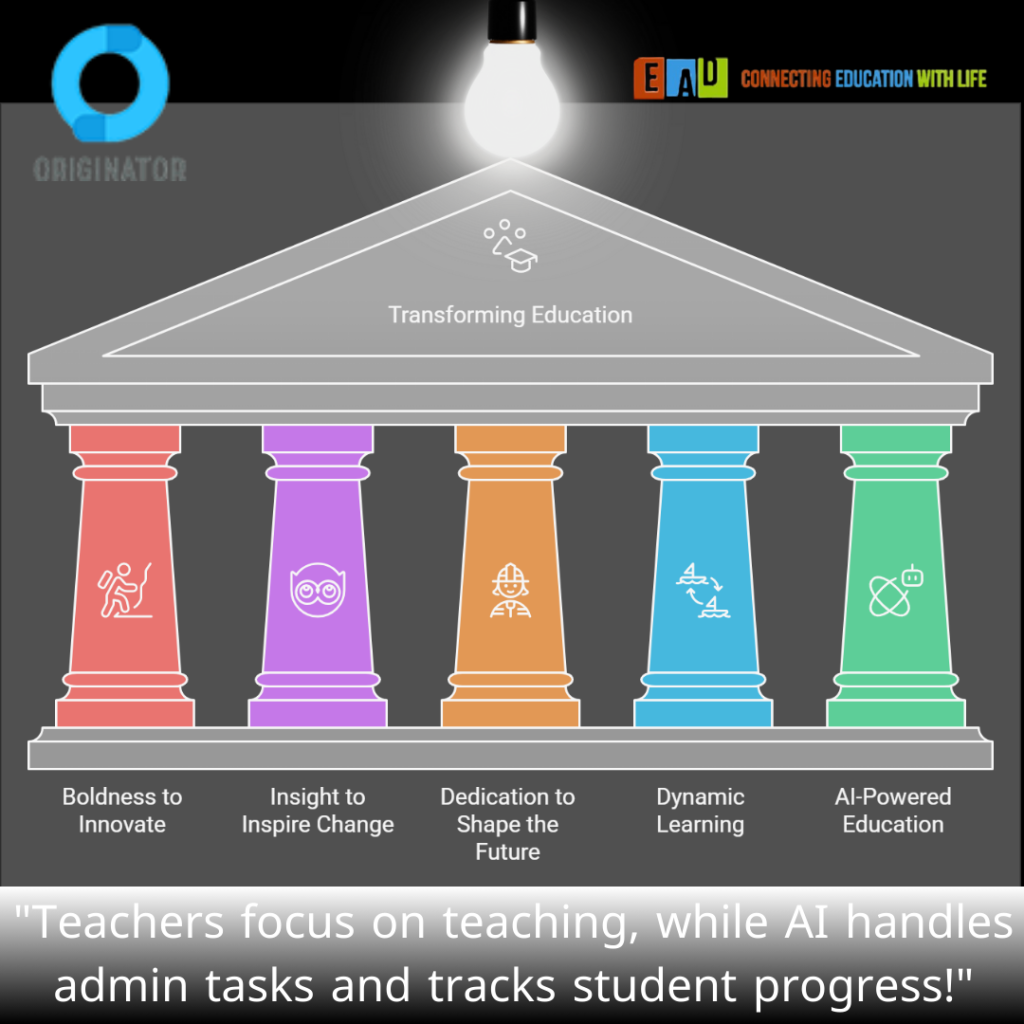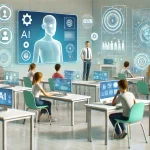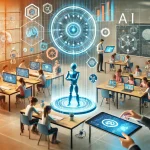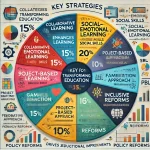The Principal’s Dilemma: A Story of Change
As Principal James sat in his office, the paperwork on his desk never seemed to shrink. Scheduling conflicts, attendance records, budget allocations—everything demanded his attention. Despite his best efforts, inefficiencies remained. The phone rang; a concerned parent asked for an update on their child’s progress. James sighed, realizing he had to search through files manually. He wondered how much smoother things would be with AI in Education—automating administrative tasks, providing real-time student performance insights, and enhancing communication with parents through smart dashboards. With AI-powered education management systems, he could streamline processes, personalize learning experiences, and make data-driven decisions to improve student outcomes.
Then came the turning point—a new AI-driven school management system was introduced. Within weeks, attendance tracking was automated, scheduling conflicts were resolved in minutes, and parent-teacher communication improved dramatically. Most importantly, teachers could finally focus on what they do best: teaching.
This isn’t just a story; it’s a reality for schools embracing AI. But how does AI truly impact school administration, and what are the challenges it brings? Let’s take a deep dive.
Artificial Intelligence (AI) is revolutionizing early childhood education by enhancing personalized learning, streamlining administrative tasks, and fostering stronger connections between educators, students, and parents. It enables teachers to focus more on mentorship and creativity while ensuring students receive tailored educational experiences. By embracing AI-driven tools and strategies, educators can unlock new possibilities and better prepare learners for a future shaped by innovation.

AI Enhancing Education: Reducing Admin Work
1. AI Handles Tedious Administrative Tasks
AI takes care of repetitive tasks, allowing teachers to focus on lesson planning and student engagement:
- Attendance Tracking: Facial recognition and RFID scans ensure real-time, error-free logging.
- Scheduling and Timetables: AI optimizes schedules, resolving conflicts instantly.
- Report Generation: AI drafts detailed reports, reducing paperwork for educators.
💡 Why It Matters: Teachers spend nearly 50% of their time on administrative work. AI automates these tasks, giving them more time to teach.
Case Study: AI-Powered Scheduling in Finland
In Finland, AI-driven scheduling reduced teacher workload by 30%. Schools reported better student engagement as teachers had more time for lesson planning.
AI for Student Progress Tracking and Personalized Learning
2. AI Tracks Student Performance in Real-Time
AI systems analyze student data to provide real-time insights into progress, helping teachers:
- Identify struggling students early.
- Tailor lessons based on individual learning needs.
- Automate grading and feedback.
📢 Example: Schools using AI-driven progress tracking report a 25% improvement in student performance due to timely interventions.

Improved Communication: AI as a Digital Assistant
3. AI-Driven Communication Tools
- Chatbots: Provide instant answers to parent and student queries.
- Automated Emails & Newsletters: AI drafts, edits, and sends updates.
- Parent-Teacher Engagement: Real-time notifications keep parents informed about their child’s progress.
📢 Example: A school in Canada implemented AI-driven notifications for assignment deadlines and student performance. 92% of parents reported feeling more connected to their child’s education.
AI in Resource and Budget Management
4. AI Optimizes Staffing and Budget Allocation
AI can:
- Analyze staff allocation and suggest optimal workforce distribution.
- Identify classroom space utilization trends.
- Recommend cost-saving measures without compromising education quality.
💰 Fact: Schools that implemented AI-driven budget management saw a 15% increase in efficiency within one academic year.
Document and Meeting Management: AI as an Office Assistant
5. AI Summarization and Scheduling
- AI tools extract key points from lengthy documents.
- Automatically generate meeting agendas.
- Summarize discussions for actionable insights.
💡 Impact: Schools using AI for document management reduce administrative workload by 40%.
Challenges and Ethical Concerns: AI’s Dark Side
Despite its benefits, AI in education raises concerns:
- Privacy Risks: Student data security must be a priority.
- High Initial Costs: AI implementation requires investment in tools and training.
- Job Displacement: Administrative roles may shrink, requiring workforce adaptation.
- Algorithm Bias: AI decisions need human oversight to prevent discrimination.
Case Study: The 2019 AI Bias Incident
A UK school used an AI-based grading system that unintentionally favored students from wealthy backgrounds. Lesson: AI must be monitored for fairness.
Future Outlook: Where AI is Headed
🔮 The next wave of AI will include:
- Enhanced Predictive Capabilities for student performance.
- Voice Recognition for Personalized Assistance (e.g., AI tutors via voice commands).
- AI-Driven Mental Health Support for Students.
🚀 Schools embracing AI strategically will create smarter, more efficient learning environments.
Final Thoughts: AI Enhances, Not Replaces, Teachers
AI is a tool, not a replacement for educators. The best school systems will combine AI efficiency with the irreplaceable empathy of teachers and administrators.
Call to Action:
Is your school ready for an AI-driven transformation? The future is now—start small, experiment with AI tools, and create a smarter learning environment today!
📌 Want to explore more? Check out our latest insights on AI in education at Early Age Development Blog
Conclusion
AI is revolutionizing early childhood education by streamlining administrative tasks, personalizing learning experiences, and improving communication between teachers and parents. By adopting AI-driven tools and strategies, educators can focus more on mentorship and creativity, ensuring no child is left behind. As we move into the future, integrating AI into education will empower students and teachers alike, fostering innovation, adaptability, and lifelong learning. The right blend of human empathy and technological advancements will prepare learners for an AI-driven world while keeping education dynamic, inclusive, and student-centered.





